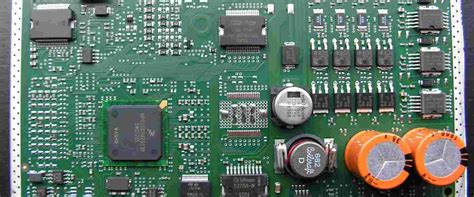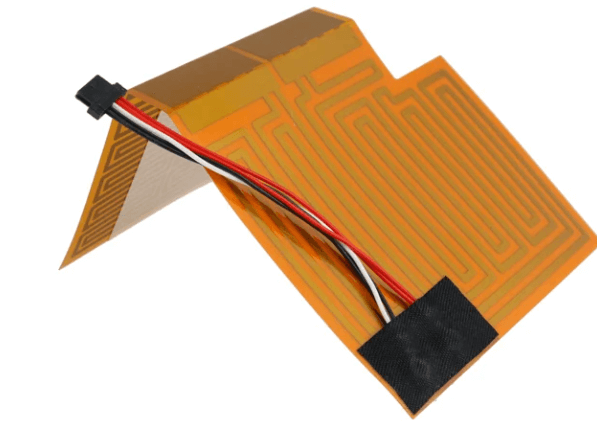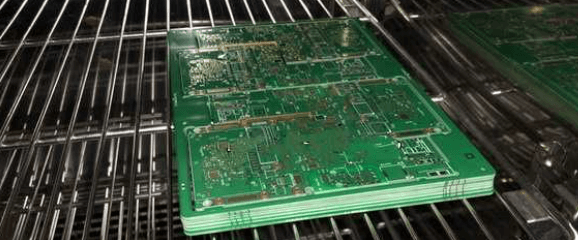Aluminum pcb for led
Advantages Of Using Aluminum PCB For LED Applications
Aluminum PCBs, or printed circuit boards, have become increasingly popular in LED applications due to their numerous advantages.
One of the primary benefits of using aluminum PCBs in LED technology is their superior thermal conductivity.
LEDs generate a significant amount of heat during operation, and managing this heat is crucial to maintaining the performance and longevity of the LEDs. Aluminum PCBs excel in this regard because they can efficiently dissipate heat away from the LED components, thereby reducing the risk of overheating and ensuring stable operation.
In addition to their excellent thermal management properties, aluminum PCBs offer enhanced durability and mechanical stability.
The aluminum substrate provides a robust foundation that can withstand physical stress and environmental factors better than traditional fiberglass-based PCBs. This makes aluminum PCBs particularly suitable for applications where the LED devices are exposed to harsh conditions, such as outdoor lighting, automotive lighting, and industrial lighting systems. The increased durability translates to a longer lifespan for the LED products, which is a significant advantage for both manufacturers and end-users.
Moreover, aluminum PCBs contribute to improved energy efficiency in LED applications.
The efficient heat dissipation not only protects the LED components but also allows them to operate at optimal temperatures. When LEDs function within their ideal temperature range, they consume less power and produce more light output per watt of electricity. This results in lower energy consumption and reduced operational costs, making aluminum PCBs an environmentally friendly and cost-effective choice for LED lighting solutions.
Another notable advantage of aluminum PCBs is their lightweight nature.
Despite their robustness, aluminum PCBs are relatively light compared to other materials with similar thermal and mechanical properties. This characteristic is particularly beneficial in applications where weight is a critical factor, such as in aerospace, automotive, and portable lighting devices. The reduced weight can lead to easier handling, installation, and transportation of the LED products, further enhancing their practicality and usability.
Furthermore, aluminum PCBs offer design flexibility, allowing engineers to create more compact and efficient LED circuits.
The ability to integrate multiple components on a single board without compromising performance is a significant advantage in modern electronic design. This flexibility enables the development of innovative LED products with advanced features and functionalities, catering to the evolving demands of various industries.
In terms of cost-effectiveness, aluminum PCBs present a compelling case.
While the initial cost of aluminum PCBs may be higher than traditional PCBs, the long-term benefits often outweigh the upfront investment. The extended lifespan, reduced maintenance requirements, and energy savings contribute to a lower total cost of ownership. Additionally, the growing demand for aluminum PCBs has led to advancements in manufacturing processes, resulting in more competitive pricing and wider availability.
In conclusion, the advantages of using aluminum PCBs for LED applications are manifold. Their superior thermal conductivity, enhanced durability, improved energy efficiency, lightweight nature, design flexibility, and cost-effectiveness make them an ideal choice for a wide range of LED lighting solutions. As the LED industry continues to evolve and expand, the adoption of aluminum PCBs is likely to increase, driven by the need for reliable, efficient, and sustainable lighting technologies.
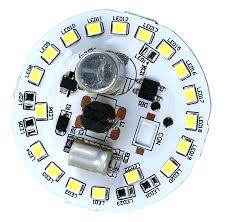
Thermal Management In Aluminum PCBs For LED Lighting
Aluminum PCBs, or printed circuit boards, have become a cornerstone in the development of LED lighting technology, primarily due to their superior thermal management capabilities.
As LED lighting systems continue to evolve, the need for efficient heat dissipation has become increasingly critical. This is where aluminum PCBs excel, offering a robust solution to the thermal challenges posed by high-power LED applications.
One of the primary reasons aluminum PCBs are favored in LED lighting is their excellent thermal conductivity.
Unlike traditional FR4 PCBs, which are made from fiberglass and epoxy resin, aluminum PCBs incorporate a metal core that significantly enhances heat dissipation.
This metal core, typically composed of aluminum, acts as a heat sink, drawing heat away from the LED components and dispersing it more effectively.
Consequently, this reduces the thermal resistance and ensures that the LEDs operate within their optimal temperature range, thereby extending their lifespan and maintaining their luminous efficacy.
Moreover, the structure of aluminum PCBs is specifically designed to facilitate efficient thermal management.
These PCBs generally consist of three layers: a conductive layer, a dielectric layer, and a metal base layer. The conductive layer, usually made of copper, is where the electronic components are mounted. The dielectric layer, which is thermally conductive but electrically insulating, serves as a bridge between the conductive layer and the metal base. This configuration allows for the rapid transfer of heat from the conductive layer to the metal base, which then dissipates the heat into the surrounding environment.
In addition to their thermal management properties, aluminum PCBs offer several other advantages that make them ideal for LED lighting applications.
For instance, they are highly durable and can withstand mechanical stress and environmental factors such as moisture and dust. This durability ensures that the LED lighting systems remain reliable and functional over extended periods, even in harsh conditions. Furthermore, aluminum PCBs are lightweight, which is particularly beneficial for applications where weight is a critical factor, such as in automotive and aerospace lighting.
Another significant benefit of using aluminum PCBs in LED lighting is their cost-effectiveness.
While the initial cost of aluminum PCBs may be higher than that of traditional FR4 PCBs, the long-term benefits often outweigh the initial investment.
The enhanced thermal management capabilities lead to improved performance and longevity of the LED systems, reducing the need for frequent replacements and maintenance. This, in turn, results in lower overall costs and a higher return on investment.
It is also worth noting that aluminum PCBs contribute to energy efficiency in LED lighting systems.
By effectively managing heat, these PCBs help maintain the optimal operating temperature of the LEDs, which is crucial for their energy efficiency. LEDs that operate at lower temperatures consume less power and produce more light per watt, making them more energy-efficient. This is particularly important in large-scale lighting installations, where energy savings can be substantial.
In conclusion, aluminum PCBs play a pivotal role in the thermal management of LED lighting systems. Their superior thermal conductivity, structural design, durability, and cost-effectiveness make them an ideal choice for high-power LED applications. As the demand for efficient and reliable LED lighting continues to grow, the importance of aluminum PCBs in ensuring optimal performance and longevity cannot be overstated. By effectively addressing the thermal challenges associated with LED lighting, aluminum PCBs contribute to the advancement of this technology, paving the way for more innovative and energy-efficient lighting solutions.
Manufacturing Process Of Aluminum PCBs For LED Technology
The manufacturing process of aluminum PCBs for LED technology is a sophisticated and intricate procedure that demands precision and expertise. Aluminum PCBs, also known as metal-core printed circuit boards (MCPCBs), are specifically designed to enhance the performance and longevity of LED applications.
The process begins with the selection of high-quality aluminum substrates, which serve as the foundation for the PCB.
These substrates are chosen for their excellent thermal conductivity, which is crucial for dissipating the heat generated by LEDs.
Once the aluminum substrate is selected, it undergoes a series of preparatory steps.
Initially, the substrate is cleaned to remove any impurities or contaminants that could affect the adhesion of subsequent layers.
This is typically achieved through chemical cleaning processes that ensure the surface is pristine. Following this, a dielectric layer is applied to the aluminum substrate. This layer acts as an insulator, preventing electrical shorts between the conductive layers and the aluminum base.
The dielectric material is carefully chosen to provide optimal thermal conductivity while maintaining electrical insulation properties.
Subsequently, a copper foil is laminated onto the dielectric layer. This copper layer will form the conductive pathways for the electrical signals.
The lamination process involves applying heat and pressure to bond the copper foil securely to the dielectric layer. After lamination, the copper layer is patterned using a photolithographic process.
A photosensitive resist is applied to the copper surface, and a photomask is used to expose the desired circuit pattern. The exposed areas are then developed, leaving behind the circuit pattern on the copper layer.
Following the photolithographic process, the exposed copper is etched away using a chemical etchant, leaving behind the desired circuit traces.
The remaining photoresist is then stripped away, revealing the finished copper circuit pattern.
At this stage, the PCB undergoes a series of inspections to ensure the accuracy and integrity of the circuit traces. Any defects or inconsistencies are identified and rectified to maintain the quality of the final product.
To further enhance the performance and durability of the aluminum PCB, a solder mask is applied over the copper traces.
The solder mask serves as a protective layer, preventing oxidation and providing insulation between the conductive traces. It also helps to define the areas where solder will be applied during the assembly process.
The solder mask is typically applied using a screen-printing process, followed by curing to ensure it adheres firmly to the copper surface.
The final step in the manufacturing process involves the application of a surface finish to the exposed copper pads. This surface finish, often in the form of a thin layer of gold, silver, or tin, ensures good solderability and protects the copper from oxidation. The choice of surface finish depends on the specific requirements of the LED application and the assembly process.
Throughout the manufacturing process, stringent quality control measures are implemented to ensure the reliability and performance of the aluminum PCBs. These measures include electrical testing, thermal cycling, and mechanical inspections to verify the integrity of the PCB.
By adhering to these rigorous standards, manufacturers can produce aluminum PCBs that meet the demanding requirements of LED technology, providing efficient heat dissipation, reliable electrical performance, and long-lasting durability.
In conclusion, the manufacturing process of aluminum PCBs for LED technology is a meticulous and highly controlled procedure that involves multiple stages, from substrate preparation to final surface finishing. Each step is critical in ensuring the performance and reliability of the final product, making aluminum PCBs an essential component in the advancement of LED technology.
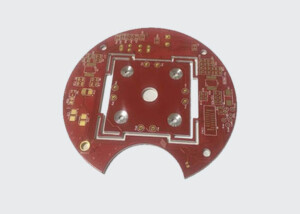
Comparing Aluminum PCBs To Traditional PCBs In LED Systems
In the realm of LED systems, the choice of printed circuit boards (PCBs) plays a pivotal role in determining the efficiency, longevity, and overall performance of the lighting solution.
Among the various types of PCBs available, aluminum PCBs have garnered significant attention, particularly when compared to traditional PCBs. This comparison is essential for understanding why aluminum PCBs are often preferred in LED applications.
To begin with, one of the most critical factors in LED systems is heat dissipation.
LEDs generate a considerable amount of heat during operation, and if this heat is not effectively managed, it can lead to reduced performance and a shorter lifespan of the LEDs. Traditional PCBs, typically made from materials like fiberglass, do not possess the same thermal conductivity as aluminum. Consequently, they are less efficient at dissipating heat away from the LEDs. In contrast, aluminum PCBs are specifically designed to enhance thermal management. The aluminum base layer acts as a heat sink, efficiently transferring heat away from the LEDs and thereby maintaining optimal operating temperatures. This superior thermal performance is a primary reason why aluminum PCBs are favored in high-power LED applications.
Moreover, the structural integrity and durability of aluminum PCBs offer additional advantages over traditional PCBs.
Aluminum is a robust material that provides mechanical stability and resistance to physical stress. This is particularly beneficial in LED systems that are subject to harsh environmental conditions or mechanical vibrations.
Traditional PCBs, while adequate for many applications, may not offer the same level of durability and can be more susceptible to damage under extreme conditions. Therefore, the use of aluminum PCBs can enhance the reliability and longevity of LED systems, making them suitable for a wider range of applications, including automotive lighting, outdoor displays, and industrial lighting solutions.
Another aspect to consider is the electrical performance of aluminum PCBs compared to traditional PCBs.
Aluminum PCBs typically feature a dielectric layer with high thermal conductivity and low thermal resistance, which not only aids in heat dissipation but also ensures efficient electrical insulation. This results in improved overall electrical performance and stability of the LED system.
Traditional PCBs, on the other hand, may not offer the same level of electrical insulation and thermal management, potentially leading to issues such as thermal runaway or electrical failures in high-power LED applications.
Furthermore, the manufacturing process of aluminum PCBs can also contribute to their advantages.
The use of aluminum as a base material allows for the creation of thinner and lighter PCBs without compromising on performance. This can be particularly advantageous in applications where space and weight are critical factors. Traditional PCBs, while versatile, may not offer the same level of compactness and weight efficiency, which can be a limitation in certain LED applications.
In conclusion, when comparing aluminum PCBs to traditional PCBs in LED systems, it becomes evident that aluminum PCBs offer several distinct advantages. Their superior thermal management, enhanced durability, improved electrical performance, and efficient manufacturing process make them an ideal choice for high-power and demanding LED applications. While traditional PCBs remain suitable for many uses, the specific requirements of LED systems often make aluminum PCBs the preferred option, ensuring optimal performance and longevity of the lighting solution.

